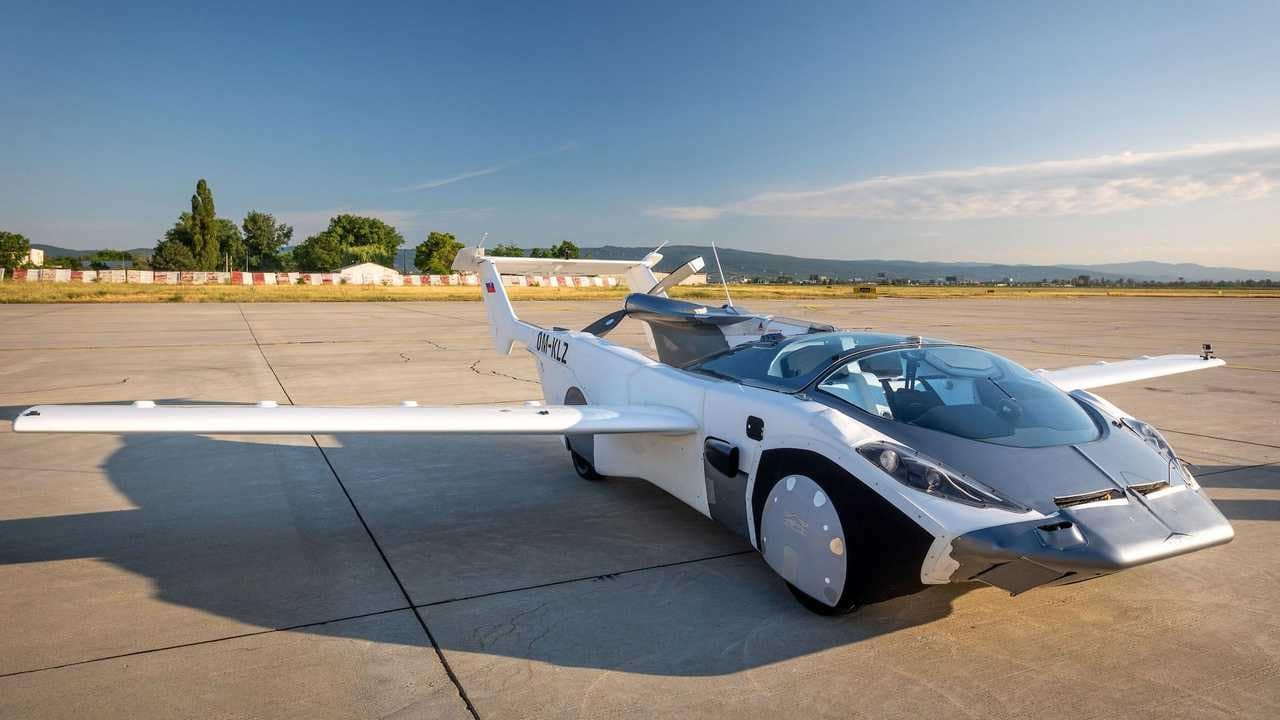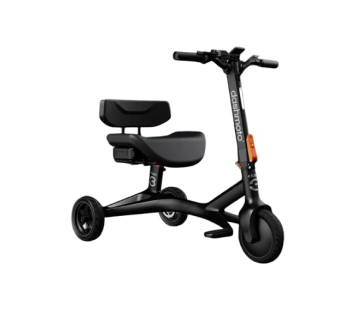When we think of futuristic transportation, flying is often at the top of the list. But with this exciting innovation comes the crucial question of safety. For many, the image conjures up a world of convenience, zipping from rooftop to rooftop, bypassing rush hour gridlock forever. But beneath the thrilling possibilities lies a layer of nervous excitement. Are flying cars safe? Can we trust these machines to carry us safely through the skies, or are we destined for a future filled with rogue drones and personal air apocalypses?
This isn't just about the safety of those taking flight. As we look towards a future where flying cars could be a common sight in the skies, it is essential to understand the safety features that will be paramount in ensuring the smooth operation of these vehicles. In this article, we will delve into the essential safety features of flying cars, the advancements in technology that make them safe, and how they compare to traditional car safety mechanisms.
Table of Contents
Understanding flying car safety features
When it comes to flying cars, safety is of utmost importance. These vehicles will be operating in a three-dimensional space, posing unique challenges compared to traditional cars. To mitigate risks and enhance safety, flying cars are equipped with a range of cutting-edge features:
Collision Avoidance Systems
One key safety feature in flying cars is the implementation of sophisticated collision avoidance systems. These systems use a combination of sensors, cameras, and radar to detect obstacles in the vehicle's path and take evasive action to prevent a collision. By constantly monitoring the surrounding airspace, flying cars can navigate through crowded skies with ease.
Autopilot Technology
Autopilot technology plays a crucial role in flying car safety by assisting with navigation and flight control. Advanced autopilot systems can automatically adjust the vehicle's altitude, speed, and direction, reducing the burden on the pilot and enhancing overall safety. In the event of an emergency, autopilot can also take over control to ensure a safe landing.
Emergency Landing Protocols
In the unlikely event of a malfunction or loss of power, flying cars are equipped with emergency landing protocols to ensure a safe descent to the ground. These protocols include automated procedures for deploying emergency parachutes, landing gear, or other safety mechanisms to protect the occupants and minimize damage.
Beyond the Essential Three: Additional Safety Features
While the features above are crucial, flying car safety goes even further:
- Digital Traffic Management Systems: Imagine a complex air traffic control system specifically designed for flying cars. These systems would manage airspace utilization, prevent congestion, and ensure safe separation between vehicles, minimizing the risk of mid-air collisions.
- Cybersecurity Measures: Flying cars will be heavily reliant on software and digital systems. Robust cybersecurity measures will be essential to protect against hacking and ensure the integrity of flight control systems.
- Weather Monitoring and Avoidance Systems: Adverse weather conditions can pose a significant threat to flying cars. Advanced weather monitoring systems would allow them to detect and avoid storms, turbulence, or other hazardous weather phenomena.
- Post-Crash Safety Features: Even with the best preventative measures, accidents can happen. Flying cars could incorporate features like fire suppression systems, self-sealing fuel tanks, and emergency medical alert systems to minimize damage and ensure passenger safety in the aftermath of a crash.
Advancements in Design and the Role of AI
The design of flying cars has evolved significantly in recent years, incorporating state-of-the-art technologies to enhance safety and performance. Artificial intelligence (AI) plays a crucial role in optimizing flight operations and ensuring a smooth travel experience.

AI-Powered Flight Systems
AI algorithms are used to analyze real-time data from various sensors and make split-second decisions to maintain safe flight conditions. By leveraging AI, flying cars can adapt to changing environments, avoid potential hazards, and optimize their route for maximum efficiency.
Enhanced Stability and Maneuverability
Modern flying cars are designed with advanced aerodynamics and stability control systems to ensure smooth and stable flight. AI algorithms continuously monitor the vehicle's movements and make adjustments to maintain optimal stability, even in adverse weather conditions or challenging flight scenarios.
Flying small planes vs. flying cars: safety comparison
Flying car safety features represent a significant departure from traditional car safety mechanisms, which are primarily focused on preventing collisions on the road. While both types of vehicles prioritize occupant safety, flying cars introduce a new set of challenges and requirements that necessitate innovative solutions. This way, the flying car has nothing to do with small planes:
- Traditional car safety features: Airbags, seat belts, crumple zones, ABS brakes
- Flying car safety features: Collision avoidance systems, autopilot technology, emergency landing protocols
- Small planes: Their own set of safety features tailored to their size and purpose. These features may include stall warning systems.
Flying Cars: A New Frontier in Safety
Safety is paramount in the world of flying cars, and these advanced technologies are paving the way for a future where transportation is not limited to the ground. Here's where their distinct safety features come in:
- Collision Avoidance Systems: Imagine a virtual bubble around your flying car, constantly scanning for other airborne vehicles and obstacles. This technology would be crucial in preventing mid-air collisions, a far greater risk than on the road.
- Autopilot Technology: While still under development for consumer use, autopilot systems could significantly reduce pilot error, a major factor in plane crashes. This would be especially valuable for non-pilot users navigating complex situations.
- Emergency Landing Protocols: Flying cars might incorporate features like ballistic parachutes or auto-landing on designated zones in case of engine failure or other emergencies.
Small Planes: Proven Techniques for Established Risks
Small planes, on the other hand, have a well-established safety record built on decades of experience. Their safety features address the specific challenges of flight:
- Stall Warning Systems: These systems alert pilots when the plane approaches a stall, a condition where the wings lose lift, potentially leading to a dangerous loss of control.
- Aircraft Transponders: These devices constantly transmit the plane's location and altitude, allowing air traffic control to maintain safe separation between aircraft.
- Pilot Training: Extensive training is mandatory for small plane pilots, ensuring they possess the skills and knowledge to handle emergencies and navigate various weather conditions.
The Road (and Sky) Ahead
Flying cars hold immense potential for revolutionizing transportation, but their safety needs careful consideration and innovative solutions. While they differ from small planes, both aim to keep passengers safe in the skies. As flying car technology matures, we can expect even more advanced safety features to emerge, paving the way for a future where both convenience and safety take flight.
Safety Equipment for Flying Cars: A Gearbox for the Skies
Unlike our terrestrial counterparts, flying cars won't rely solely on airbags and crumple zones. Forget about buckling up and hoping for the best – flying car safety is all about proactive measures and preparing for the unexpected mile high. Here's a look at some key pieces of equipment that might become essential in your future flying car's "gearbox":
- Parachute or Ballistic Recovery System: This might sound dramatic, but a reliable last-resort option for a complete system failure is crucial. Imagine a deployable parachute or a rocket-powered system that gently brings the car down to a safe landing zone.
- Advanced Collision Avoidance Systems (ACAS): Think of these as super-powered hazard lights on steroids. ACAS would use a combination of radar, LiDAR (laser imaging), and cameras to scan for other flying vehicles and obstacles in real-time. Imagine a constant virtual shield protecting your car from mid-air mishaps.
- Redundant Flight Control Systems: Just like having two engines for extra peace of mind, flying cars might have multiple flight control systems. If one system malfunctions, the other takes over, ensuring uninterrupted flight and giving pilots precious seconds to react.
- Self-Diagnostics and Auto-Landing: Flying cars could become whizzes at self-monitoring. Imagine a system that constantly analyzes engine performance, flight controls, and weather data. If trouble arises, the car could initiate an auto-landing protocol, guiding itself to a designated landing zone or even contacting air traffic control for assistance.
- Emergency Oxygen Supply: While not as thrilling as a parachute, an emergency oxygen supply ensures passengers can breathe easily in case of a cabin pressurization issue at high altitudes. Think of it as a portable version of what airline passengers use during emergencies.
This is just a glimpse into the potential safety equipment for flying cars. As technology evolves, we can expect even more innovative solutions to emerge, making the skies a safer place for everyone.
Conclusion
As we delve into the realm of flying car safety technology, it is clear that innovation and advancements are driving the evolution of transportation. With continuous advancements in technology, the safety standards of flying cars are set to increase, ensuring a secure and efficient mode of transportation for the future. By incorporating sophisticated features such as collision avoidance systems, autopilot technology, and emergency landing protocols, flying cars are poised to revolutionize the way we travel.
With AI at the helm, these vehicles offer a glimpse into a future where safety and efficiency go hand in hand in the skies. Embracing these advancements will not only ensure the safe operation of flying cars but also pave the way for an exciting new era of transportation.



